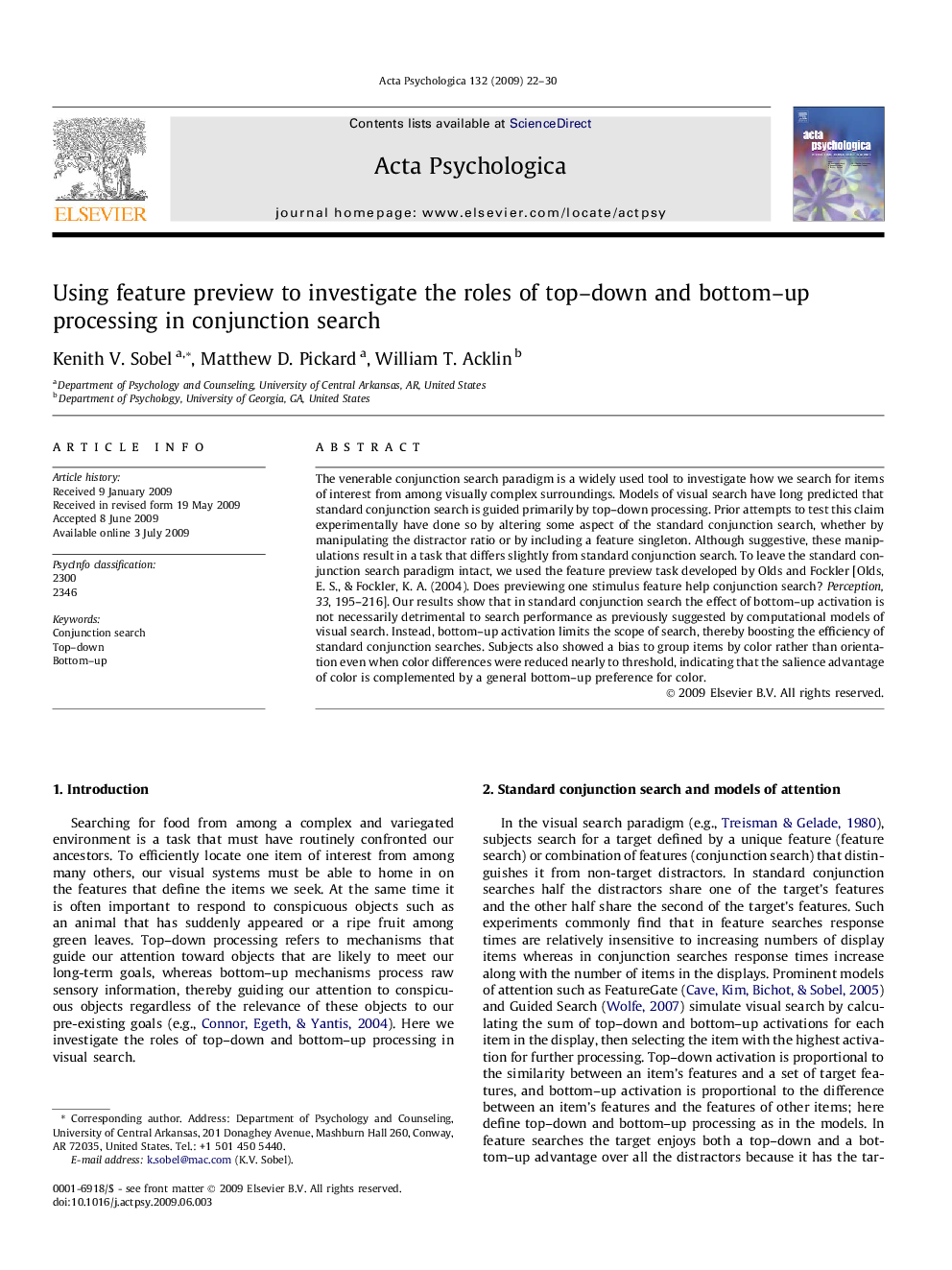| Article ID | Journal | Published Year | Pages | File Type |
|---|---|---|---|---|
| 920275 | Acta Psychologica | 2009 | 9 Pages |
The venerable conjunction search paradigm is a widely used tool to investigate how we search for items of interest from among visually complex surroundings. Models of visual search have long predicted that standard conjunction search is guided primarily by top–down processing. Prior attempts to test this claim experimentally have done so by altering some aspect of the standard conjunction search, whether by manipulating the distractor ratio or by including a feature singleton. Although suggestive, these manipulations result in a task that differs slightly from standard conjunction search. To leave the standard conjunction search paradigm intact, we used the feature preview task developed by Olds and Fockler [Olds, E. S., & Fockler, K. A. (2004). Does previewing one stimulus feature help conjunction search? Perception, 33, 195–216]. Our results show that in standard conjunction search the effect of bottom–up activation is not necessarily detrimental to search performance as previously suggested by computational models of visual search. Instead, bottom–up activation limits the scope of search, thereby boosting the efficiency of standard conjunction searches. Subjects also showed a bias to group items by color rather than orientation even when color differences were reduced nearly to threshold, indicating that the salience advantage of color is complemented by a general bottom–up preference for color.
